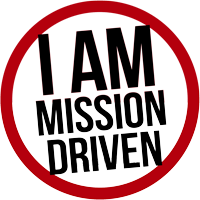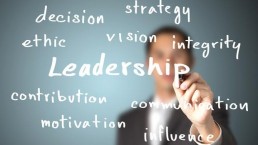Throw The Old Rules Out The Window
Changes in China’s environmental rules and regulations, the first revision in 25 years, take effect January 1 next year with stiffer penalties for companies that flout the law. In recent years, as well, there have been a number of cases across the country where residents’ objections, because of environmental concerns, have led to major projects being scrapped. China, it appears, is now getting serious about finding an economic model that balances social and environmental needs and this will change how business is done .
The Chinese have joined ordinary people all around the world who are being catalyzed to take action against firms that are polluting their air, water, or undermining their local economy. Consumers are being catalyzed to take action against companies whose products are unsafe or practices are unfair. Governments are being catalyzed to improve standards, largely in response to the actions of citizens and consumers, and this increases the cost of doing business. This is why, for executives leading global firms, large or small, it’s more important than ever to rethink their vision and value chain when it comes to sustainability .
For years, investments in CSR and sustainability programs were touted as the best way to create engagement and insulate a brand. But those investments are often separate from the core business; so when failures snowballed into a call to action, the short-term nature of these programs quickly showed through. Going forward, companies will have to break through this cycle if they’re going to keep up with, and stay ahead of, the changes in regulation and consumers’ expectations.
To do this, business leaders must understand the need for recalibration at the very core of their organizations. This would be a major shift that moves a firm from the mindset that ‘compliance and good CSR is merely strategy’, to one where a new vision for the firm is born, risks are removed entirely, and new market opportunities are identified, innovation created, and stakeholders are engaged.
In this scenario, no templates exist. The issues are intangible and, depending on each firm’s structure, industry position, and capacity, it will need to develop something highly customized. But, in general, there are 6 steps to making this change:
- Rethink: Explore and analyze your value chain to identify areas of risk, opportunity, and action. For many firms, this is a critical first step. It provides the data needed to identify and understand the issues of environment, society, and economy that will challenge the value chain. These are challenges that will force leadership to scrap boiler plate definitions of sustainability, and create customized, tangible, definitions.
- Re-Vision: Be committed to a crystal-clear vision and purpose. In the cases of Unilever, Interface, Whole Food Markets, and many others, this vision came from the CEO and/or founder, who had to personally drive the move forward. For Ray Anderson, founder of Interface, the process has been ongoing for 20 years. Before his passing, Anderson had built the capacity within Interface’s ranks to maintain their path towards summiting “Mount Sustainability” and achieving their 2020 goals of zero waste and zero virgin material usage.
- Restructure: Create a blueprint for implementing your ‘re-vision’. Redesign products so that unnecessary processes can be eliminated, so that usage and waste of material can be reduced. This, in turn, leads to a restructuring of equipment specification and buying practices. It also means positively engaging employees, suppliers, and customers in the journey towards ‘good’.
- Realign: Strategy needs to be closely aligned to stakeholder needs, interests, and capacity. Review where you make your investments for long-term engagement. Short-term CSR exercises are a good start. But for the recalibration to have maximum impact, these engagements need to focus on how stakeholders up and down the value chain see where the firm is exposed, where opportunities for collaboration exist, and where there are new business opportunities.
- Recalibrate: Conduct a series of pilot projects that are meant to test, tweak, and prepare for a systemic recalibration of the firm over time. Interface is 20 years into their process; Wal-Mart and Unilever are both five years into theirs. It will take time, and experimentation, to get the mix right. For those firms that have completed the first four steps, this is when innovation and an innovative culture will begin to bear fruit.
- Remain Committed: Building a ‘good’ business demands the wholehearted adoption of the process, and a commitment to taking steps forward in realigning the firm’s vision, value chain, and product offerings.
Ultimately, leaders need to understand that, going forward, the issues of sustainability and CSR will become more vital to their business as the negative effects of “business as usual” increasingly disrupt the lives of their stakeholders.
This understanding will push them to take up the challenge to recalibrate their firms towards a new model, a model that is not a complete tear down of their old approach – or predicated on worst-case predictions of environmental collapse. It’s one that’s built on solid foundations of understanding how issues of environmental, social, and economic exposures map into their value chains. It’s about re-visioning their business to remove those areas of vulnerability, and then taking the steps necessary to move from inspiration to action.

